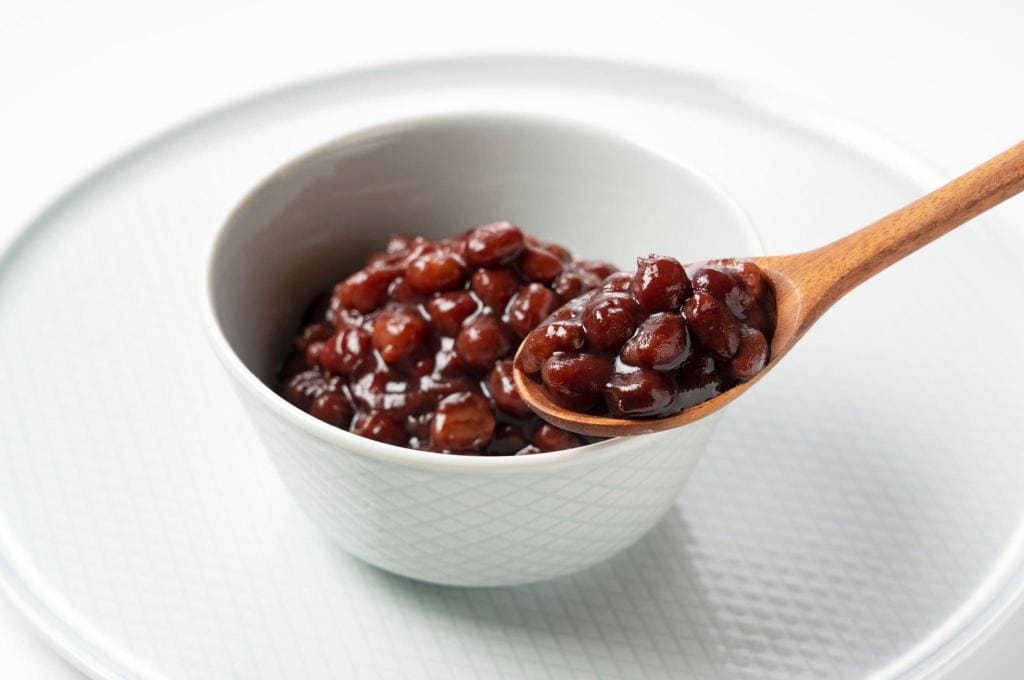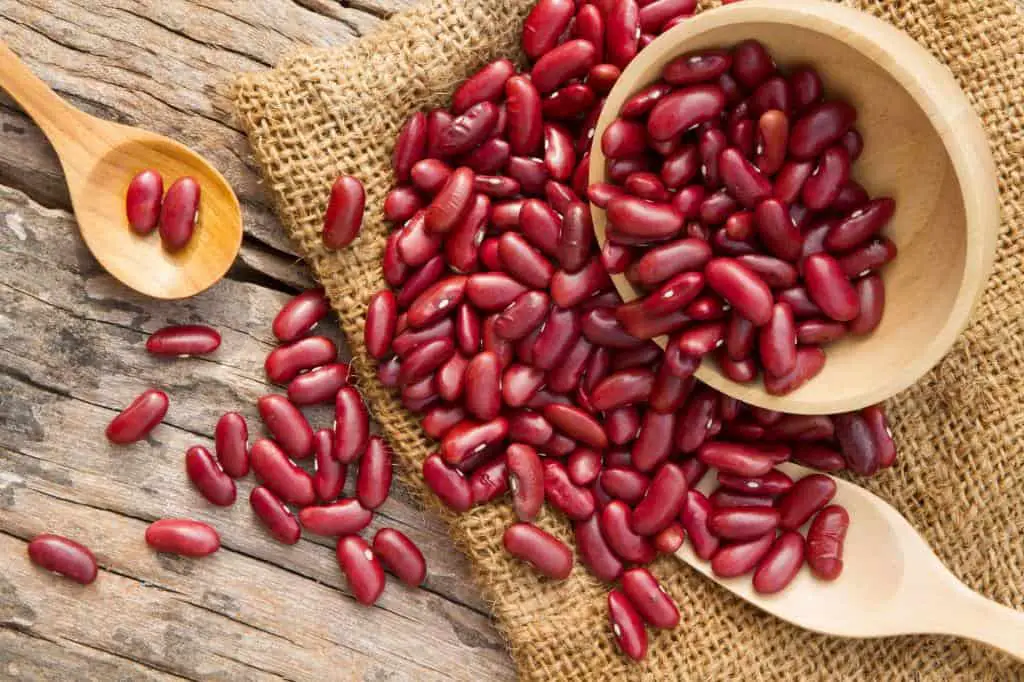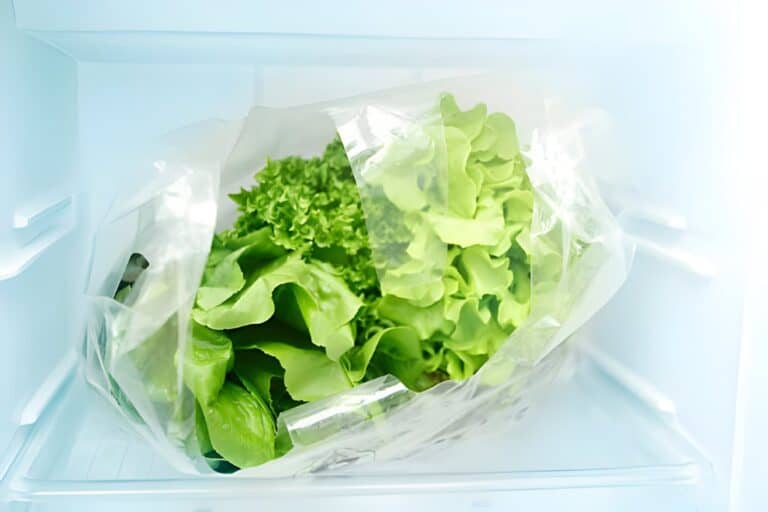Can You Eat Undercooked Kidney Beans? Are They Poisonous?

In the world of culinary delights, few ingredients are as versatile and beloved as kidney beans. Their smooth texture and earthy flavor have earned them a spot in everything from hearty chilis to vibrant salads. But here’s the twist: amid the culinary praises, a debate simmers – can you eat undercooked kidney beans? Are they, in fact, poisonous?
No, you should not eat undercooked kidney beans, as they are poisonous. Raw kidney beans contain a toxin called phytohaemagglutinin, which can cause severe nausea, vomiting, and diarrhea within hours of ingestion.
It’s a question that’s worth exploring as we unravel how to make it safe for consumption. From their appealing nutritional profile to the potential pitfalls of their toxins, this article delves deep into the science and preparation of kidney beans.
So, if you’ve ever pondered the safety of indulging in slightly undercooked beans, or if the idea of bean-related toxicity piques your curiosity, let’s embark on this flavorful journey together.
Introduction to Kidney Beans
With their scientific name, Phaseolus vulgaris, kidney beans have secured a cherished spot in the culinary world. These legumes are celebrated for their inherent adaptability and distinctive nutty undertones, which contribute to their wide-ranging popularity. Whether nestled in a hearty chili con carne or the aromatic embrace of a rajma curry, these beans exhibit a remarkable culinary versatility that tantalizes taste buds across the globe.
Kidney beans, famous for their robust and earthy taste, consistently steal the show in diverse dishes. Their creamy texture and mild flavor make them an ideal canvas for absorbing the rich flavors of various seasonings and spices.
Think of them as cozy companions to spices in dishes like Cajun-style red beans and rice or the beloved Mexican staple, Frijoles Rojos or Taco Bell’s Beans. Not only do kidney beans stand out for their savory taste, but they also boast a vibrant hue that elevates the visual appeal of any plate.
Beyond their culinary contributions, kidney beans hold cultural significance in various cuisines. From the smoky allure of Southern barbecue to the aromatic traditions of Indian cuisine, these beans effortlessly weave themselves into the fabric of global gastronomy.
Their presence isn’t just limited to main courses; they also shine in salads, dips, and spreads. Moreover, kidney beans pack a punch of essential nutrients, making them a wholesome addition to meals that cater to both taste and nourishment.
Composition of Kidney Beans
Kidney beans are nutritional powerhouses, offering a wealth of essential nutrients:
| Nutrient | Amount per 100g |
| Protein | 8.7g |
| Carbohydrates | 22.8g |
| Dietary Fiber | 7.4g |
| Vitamins (B6, C) | 0.15mg, 8.3mg |
| Minerals (Iron) | 2.8mg |
Toxic Compounds in Raw Kidney Beans

Raw kidney beans contain two main toxic compounds: lectins and phytohemagglutinin. These compounds are natural defenses for the bean but can pose risks to humans when consumed.
Lectins: These are proteins that can interfere with nutrient absorption and digestion. Consuming them in excessive amounts can lead to discomfort and digestive issues.
Phytohemagglutinin: This compound has agglutinating properties, meaning it can cause red blood cells to clump together. In humans, consuming phytohemagglutinin-rich beans can result in symptoms like nausea, vomiting, and diarrhea.
Table: Types of Kidney Bean Lectins
| Lectin | Effects of Consumption |
| Phytohaemagglutinin | Causes gastrointestinal distress |
| Phytohemagglutinin-L | Less toxic but still requires proper cooking |
Related: Do Canned Beans Have Lectins?
Dangers of Undercooked Kidney Beans
Eating undercooked kidney beans can have adverse effects on your health due to the presence of lectins and phytohemagglutinin. As mentioned, undercooked kidney beans contain a higher concentration of lectins, particularly phytohaemagglutinin.
This compound is known to cause gastrointestinal distress when consumed in large amounts. Symptoms of phytohaemagglutinin poisoning include nausea, vomiting, diarrhea, and abdominal pain. While these symptoms are often referred to as “bean poisoning,” it’s crucial to note that they result from the body’s response to lectins and not from any bacterial contamination.
Symptoms of Undercooked Kidney Bean Consumption:
- Nausea
- Vomiting
- Diarrhea
- Abdominal pain
Proper Cooking Methods for Kidney Beans
The good news is that you can enjoy kidney beans without any worries if you ensure proper preparation. Cooking kidney beans at high temperatures effectively neutralizes the lectins.
Boiling the beans for at least 10 minutes is crucial to breaking down these potentially harmful compounds. Slow cookers and crockpots, however, may not reach the required temperatures to deactivate lectins, so it’s best to avoid using them for kidney beans.
Remember that even if you’re using canned kidney beans, it’s still a wise practice to heat them before consumption. This not only helps eliminate any residual lectins but also enhances the overall flavor and texture of the beans.
How Can I Tell if Kidney Beans Are Properly Cooked?
Cooking kidney beans to perfection requires a balance between tenderness, plumpness, and mashability. When checking if your kidney beans are properly cooked, keep an eye out for these essential signs:
- Tenderness: The ideal kidney beans should exhibit a tender and creamy consistency once fully cooked. To gauge this, take a few beans between your fingers and gently apply pressure. If they yield easily and break apart without much resistance, they’re likely cooked to the desired tenderness. Another method is to try chewing a single bean. If it’s soft and smooth, it’s a good indicator that the beans are done.
- Plumpness: Fully cooked kidney beans tend to swell and become plump. As they absorb water during cooking, their size should visibly increase. If the beans look plumper than when they were raw, it’s a positive sign that they’ve absorbed enough moisture and are well-cooked.
- Mashability: Test the beans for their ease of mashing. A properly cooked kidney bean should be relatively easy to mash with a fork. If they break down without much effort and the texture is smooth, it’s a strong indication that they have reached the desired level of doneness.
Soaking Kidney Beans
Another strategy to mitigate the lectin content and ensure the beans are safe to eat is soaking. Soaking beans can reduce the lectin concentration. By soaking kidney beans for several hours (or overnight) before cooking, you are safe to use beans in your dishes. This preliminary step softens the beans and starts the breakdown process, making them easier to cook and digest.
Table : Steps for Safely Preparing Kidney Beans
| Step | Description |
| Sort | Remove discolored beans and debris |
| Rinse | Wash beans under cold water |
| Soak | Cover beans with water and let them soak |
| Boil | Drain soaked beans, add fresh water, and boil |
| Simmer | Reduce heat and simmer until tender |
| Final Boil | Boil for an additional 10 minutes |
| Enjoy | Incorporate beans into your favorite dishes |
Cultural and Culinary Use of Kidney Beans
A Global Ingredient: Kidney beans have achieved culinary stardom worldwide, gracing dishes from North and South America to Asia and Africa. Their ability to absorb flavors makes them an ideal ingredient in diverse cuisines.
Cultural Classics: Let’s peek into a few cultural delights featuring kidney beans:
- Chili Con Carne (USA and Mexico): This hearty stew blends kidney beans with meat and spices, offering a burst of flavors.
- Rajma Curry (India): A staple in Indian households, this curry infuses kidney beans with aromatic spices for a satisfying meal.
- Feijoada (Brazil): Kidney beans find a home in this rich stew of meats, creating a harmony of textures and tastes.
Common Misconceptions about Kidney Beans
Myth Busting: Let’s debunk some common myths surrounding kidney beans:
- Myth: “Kidney beans are toxic even when cooked.”
Fact: Properly cooked kidney beans are safe to eat and free of toxins.
- Myth: “All beans contain the same toxins as kidney beans.”
Fact: While many beans contain lectins, the levels vary, and proper cooking neutralizes the risk.
- Myth: Eating Kidney Beans Causes Kidney Stones.
Fact: Kidney beans, despite their name, do not cause kidney stones. In fact, they’re a good source of dietary fiber and nutrients that can contribute to overall kidney health.
- Myth: Canned Kidney Beans Are Less Nutritious.
Fact: Canned kidney beans can be just as nutritious as dried ones, with comparable amounts of protein, fiber, and other nutrients. However, canned beans might contain higher sodium levels, so opting for low-sodium or rinsing them before use can mitigate this concern.
Alternatives to Kidney Beans
If kidney beans don’t align with your preferences or dietary needs, consider these alternatives:
- Black Beans: Similar in texture, black beans are rich in fiber and protein.
- Chickpeas: Versatile and protein-packed, ideal for salads and spreads.
- Lentils: Quick-cooking legumes high in protein and essential nutrients.
Nutritional Comparison:
| Nutrient (per 100g) | Kidney Beans | Black Beans | Chickpeas | Lentils |
| Protein | 8.7g | 8.9g | 7.6g | 9.0g |
| Fiber | 7.4g | 7.5g | 7.6g | 7.9g |
| Iron | 2.8mg | 1.8mg | 2.9mg | 3.3mg |
Balanced Diet and Kidney Beans
Incorporating Kidney Beans: Embracing a balanced diet means inviting kidney beans to your table:
- Salads: Toss kidney beans into vibrant salads for added protein and texture.
- Stews and Soups: Enhance stews and soups with kidney beans to create hearty, nutritious meals.
- Wraps and Tacos: Use kidney beans as a filling in wraps and tacos for a tasty, plant-based option.
Conclusion
The importance of proper kidney bean cooking cannot be overstated when it comes to your well-being. Delving into the dangers of undercooked beans reveals the potential health risks associated with consuming inadequately prepared legumes.
A significant concern lies in the presence of lectins in kidney beans. These compounds, while natural, can cause gastrointestinal distress if not neutralized through appropriate cooking methods. Understanding the risks associated with toxic compounds in raw beans and following proper cooking methods is key to savoring kidney beans safely and deliciously.
Achieving the right cooking temperature for kidney beans is important to ensure that the beans are cooked thoroughly, not only for flavor but also for safety. The risks of eating raw kidney beans include ingesting lectins that can interfere with digestion and nutrient absorption. Prior to cooking, soaking beans before cooking aids in reducing lectin content and aids in digestion. This simple step can mitigate potential health risks from undercooked legumes.
Whether you’re crafting traditional dishes or experimenting with new recipes, knowing how to handle kidney beans properly is a must. From boiling to simmering, the process of neutralizing lectins in beans requires a patient approach, guaranteeing both deliciousness and safety.
When kidney beans are cooked correctly, they offer a rich source of nutrients and a myriad of culinary opportunities. These legumes can be seamlessly integrated into various dishes, lending not only flavor and texture but also nutritional value. However, it’s crucial to exercise caution and adhere to safe ways of consuming kidney beans, ensuring a satisfying and worry-free dining experience.
FAQs on Safe Ways To Consume Kidney Beans
Can I eat raw kidney beans?
No, raw kidney beans contain toxic compounds and should not be consumed.
What if I accidentally ate undercooked kidney beans?
Monitor for symptoms like nausea and vomiting. Drinking plenty of water can help flush out toxins. If severe symptoms occur, seek medical attention.
Can I use a slow cooker to cook kidney beans?
While slow cookers can be used, it’s recommended to first boil kidney beans for at least 10 minutes to eliminate toxins before transferring them to a slow cooker.
Can you get sick from eating undercooked kidney beans?
Yes, eating undercooked kidney beans can lead to gastrointestinal distress due to the presence of lectins, like phytohaemagglutinin. Proper cooking, like boiling for at least 10 minutes, is necessary to neutralize these toxins.
Are canned kidney beans safe to eat without further cooking?
Canned kidney beans are pre-cooked during the canning process, but it’s still recommended to heat them before consumption. This helps eliminate any remaining lectins and enhances flavor and texture.
Do other types of beans contain similar toxins to kidney beans?
Yes, other beans like white beans, navy beans, and broad beans also contain lectins. Proper cooking techniques, such as boiling, are essential to neutralize these toxins and make them safe for consumption.






